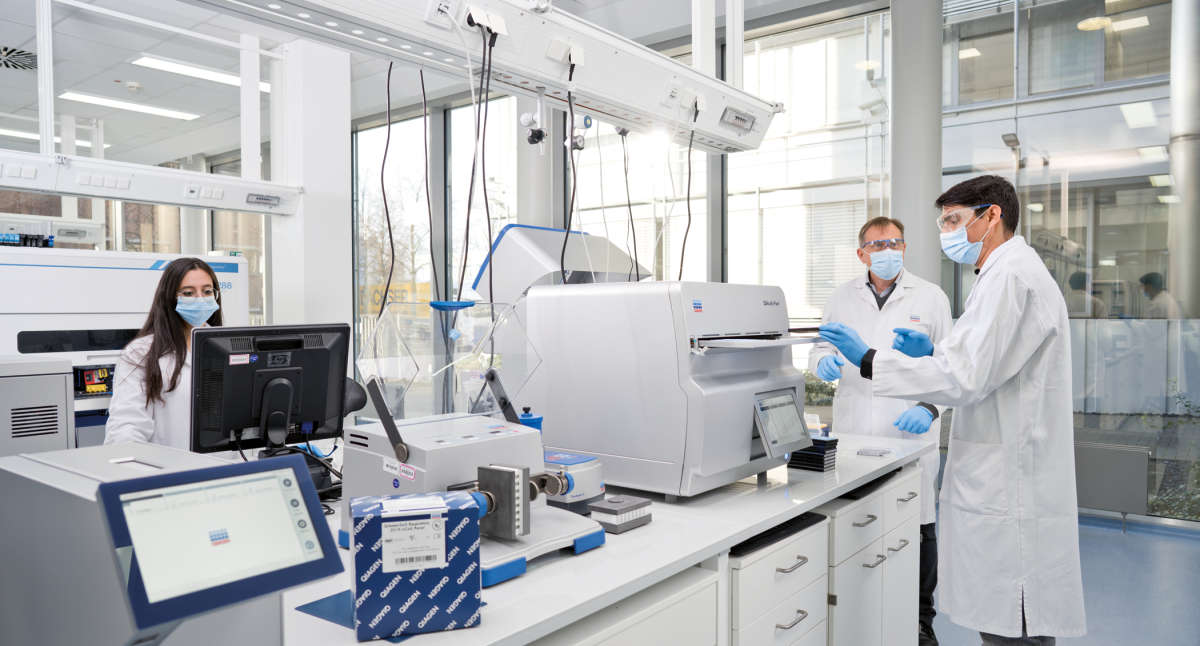
What are the fundamental aspects of performing a successful digital PCR (dPCR) assay on the QIAcuity instruments? That was the subject of a 2020 webinar featuring Dr. Andreas Missel, Director R&D at QIAGEN. Further, an insight into a few example applications of the technology, including absolute quantification, was shared, and underlying calculations and statistics involved in the analysis were explained. Dr. Missel presented the QIAcuity Software Suite, explaining the different views and interpretations of sample data.
Find answers to the top 10 questions from our webinar attendees.
Missed the webinar? Watch it on-demand here.
What is the analyzed volume per well?
For 8.5K partitions with a fixed partition volume of 0.34 nl, the analyzed volume is approximately 3 µl. For 26K partitions with a fixed partition volume of 0.91 nl, the analyzed volume is approximately 24 µl.
What is the minimum mass input (ng of DNA) at which detection can be trusted?
While it is difficult to assess when using the "mass parameter," it depends on the genome size and copy number of the target sequence. For a single copy gene in human gDNA, an input of 1 ng would correspond to 333 copies/reaction, i.e., to 28 copies/µl (in a 12 µl reaction for the 96-well plate) and 8 copies/µl (in a 40 µl reaction for the 24-well plate), respectively.
Is it possible to perform hyper-welling for increased limits of detection (LOD)?
It will become possible with the next software release planned soon.
What could be the ratio between positive and negative partitions not to reach the saturation of positives in the plate?
There isn’t a fixed ratio of positive(valid)/negative partitions. It is when the software would not give any more results. However, suppose the ratio is above 95%. In that case, one has to be cautious with the copy numbers shown, and it is recommended to repeat the experiment with a higher dilution of the sample.
Is there a master mix to do the RT in one step?
A recently-launched one-step RT-dPCR kit has been designed to detect SARS-CoV-2 explicitly. This kit should not be used for the simultaneous loading of multiple plates onto the instrument. We have started developing a generic kit compatible with multiple assays, which will enable the loading of multiple plates at the same time.
Do you need to fill in all the wells on the plate to start the run?
No, but one can't reuse the empty wells once the plate has been run or processed through the instrument.
Is there a QC parameter of at least how many detected partitions in a well to call it a valid test?
It depends on the copies you detect in this plate. If you have relatively high concentrations (e.g., 100 copies/µl), even 25% of valid partitions would give you a reliable quantification result. However, if looking for very rare events, one should instead strive for >80%. Routinely, we see >90% of valid partitions.
Is the QIAcuity compatible with common reactions – commercial or in-house using either probes or EvaGreen?
No, one would need the dedicated reference dye contained in the master mixes and additives, which will allow proper distribution of the template and master mix into the partitions.
How many fluorescence channels are available for multiplexing of assays?
Up to five fluorescent channels allow the user to perform multicolor multiplex digital PCR.
What type of assays can be used? Do you offer assays, or can we use our (dPCR) assays easily on the system?
QIAGEN offers various assay types (both for EG and probe) and is continuously expanding the number and types. A normally well-working assay (either using qPCR or on other dPCR platforms) will usually perform well with the QIAcuity master mixes. One should adhere to our recommendations for cycling parameters and primer/probe concentrations.
Visit our website to learn more about the Nanoplate dPCR technology.